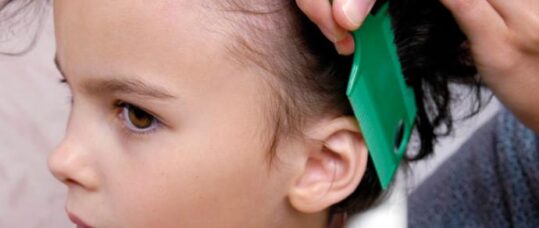Mythbuster: ‘Dirty hair makes children more prone to catching head lice’

Juliet Phillips on why dirty hair has no influence on whether children catch head lice
The myth
Children can get head lice from having dirty hair.
The reality
Having head lice is often wrongly associated with neglectful caring. This idea may have developed from infestations of lice in families and young people who were in poor and overcrowded housing with few facilities for cleanliness. These infestations were more likely to be the product of the overcrowding, which allowed the lice to move from host to host – not a matter of dirty hair. The idea was possibly reinforced by embarrassment, stigma and lack of knowledge (by school staff, parents and young people). Many families will remember the school inspections by Nitty Nora, The Bug Explorer and dreaded the possible result.
Related Article: Improving lung health one song at a time
As nurses we have to be mindful of possible safeguarding risks. We must complete assessments with the child’s best interests in mind. Historically it was best practice to exclude a young person from their place of education and social activities if they were suspected or found to have head lice, until treatment was undertaken, washing with insecticides and combing. When information was not given about the lifecycle of a head louse, how it moved from host to host and how everyone in the family might have them, this resulted in these myths – and also meant treatment was non-effective.
Another misconception is that head lice are only found in a school. Parents often forget the other clubs and activities where young people get together. They also forget to be vigilant in detection combing during the holidays.
There is no current research to support the myth that dirty hair is a predictor or necessity for head lice. In fact, the US Centers for Disease Control and Prevention states that ‘getting head lice is not related to cleanliness of the person or his or her environment,’1 and there is acknowledgment that head lice can be caught by ‘people of all genders, ages, races, and social classes’.7
A study in Norway found management of head lice was not dependent on socioeconomic group or parental background and the detection strategies used could also not be determined using these categories.2 Research published analysing the predictors and infestation dynamics in primary school children, again in Norway, found also that household and individual characteristics were of minimal importance to predict infestations, with the exception of hair length.3
Why do these myths continue to circulate? One possible reason could be the source that parents use for management information. Researchers in Australia studied what parents know and do about head lice. They found that over a third of the study group were unable to answer half of the knowledge questions correctly. They also found that although parents rate head lice as a high-priority health problem, health departments rate it as low.6
If we study the information available, we find the head louse does not need dirty hair to feed or multiply. The three stages of a louse start with the egg (often called the ‘nit’; the empty shell is white), which is laid close to the scalp on the hair shaft. The egg hatches into a nymph after seven to 10 days and develops into an adult after a further seven to 10 days. An adult can then live for 30 to 40 days, feeding off the blood of its host and laying between 50 and 150 eggs during its lifespan.5 This information on how to treat an infestation is readily available to parents, carers and communities via trusted websites such as NHS Choices and NICE CKS, and is the best way to counter the dirty hair myth.4,5
As healthcare professionals, our role is to share our evidence-based knowledge so families can make informed choices on the management of head lice with a true understanding of how they behave. We also need to highlight this information to the wider community, emphasising that head lice do not discriminate based on the cleanliness of a person’s hair, economic background, race or age.
Juliet Phillips is a school nurse in Devon
Related Article: Nurse had to ‘freeze’ PPE during pandemic to re-use in care home, Covid inquiry hears
References
1 Centers for Disease Control and Prevention. Epidemiology & Risk Factors. CDC 2013
2 Rukke B, Soleng A, Lindstedt H et al. Socioeconomic status, family background and other key factors influence the management of head lice in Norway. Parasitol Res 2014;113:1847-61
3 Birkemoe T, Lindstedt H, Ottesen P et al. Head lice predictors and infestation dynamics among primary school children in Norway. Fam Pract 2016;33:23-9
4 NHS. Head lice and nits. NHS 2018
Related Article: Call for regulatory guidelines as NHS adopts AI in dermatology care
5 NICE. CKS: Head lice. NICE 2016
6 Counahan M, Andrews R, Weld H et al. What parents in Australia know and do about head lice. Rural Remote Health 2007;7:687
7 Roth E. Where Do Lice Come From? Healthline 2016

See how our symptom tool can help you make better sense of patient presentations
Click here to search a symptom


Juliet Phillips debunks the myth that children pick up head lice because they have dirty hair



